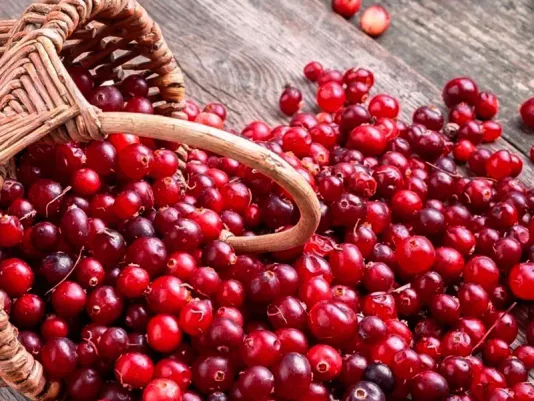Festive Cranberry Drink
Festive cranberry drink – American cuisine recipe with cranberry, orange juice and lemon juice.

Cranberry is a berry I especially love for its versatility and health benefits. In my kitchen, it appears in many forms: fresh, dried, frozen, or as a sauce. Over the years of cooking, I’ve realized that it can transform both sweet desserts and hearty meat dishes. Its bright tartness adds contrast, while its color makes the dish visually appealing. I always choose firm and shiny berries, as they contain the most flavor and nutrients. When preparing drinks or sauces, I aim to preserve as many benefits as possible, so I avoid overheating cranberries to prevent the loss of vitamin C. For me, it’s important that this berry is not only tasty but also promotes health, which is why it remains a constant in my diet.
Over the years working in the kitchen, I’ve become convinced that the proper choice of cranberries determines the flavor and nutritional value of a dish. I always pay attention to the appearance of the berries: they should be bright red, firm, and springy. A dull color, soft texture, or dark spots indicate overripeness or poor storage. In my practice, I use both fresh and frozen cranberries, as properly frozen berries hardly lose their properties. It’s important to remember that cranberries easily absorb moisture and odors, so I always keep them in airtight packaging and use them within a few days of purchase. For dried cranberries, I choose options with minimal sugar and no flavorings, as excessive sweeteners distort the natural taste. When I prepare dishes with cranberries, it’s important for me that the berry remains expressive and retains its characteristic tartness. That’s why quality is the first thing I focus on, and the result on the plate always depends on it.
I always prepare cranberries carefully before using them, as this determines the final texture and flavor. I rinse fresh berries in cold water and sort them to remove any damaged ones. If the berry is frozen, I never thaw it completely before heating: I put it directly into sauces or batter so it keeps its shape and juiciness. In my practice, this approach helps avoid watery dishes. For dried cranberries, I sometimes use a short soak in warm water or fruit juice to restore juiciness and enrich the flavor. If I make cranberry sauce, I never bring it to a rolling boil because the berry quickly breaks down and loses its shape. I prefer slow heating, which allows the berries to gradually release juice and create natural thickness. This preparation is the key to achieving a balanced result without losing flavor or benefits.
In my experience, the wrong temperature can easily ruin a cranberry dish. For sauces, I use slow heating over low heat: this way, the berries gradually release their tart-sweet juice while maintaining a pleasant texture. If the temperature is too high, the sauce may turn bitter, as the acidity reacts and alters the flavor balance. In baking, I always fold cranberries gently into the batter to prevent them from releasing too much juice and making the texture soggy. When drying cranberries in the oven, I set a low temperature around 60°C (140°F), because at higher temperatures the berries overdry and lose their natural color. In sauces and compotes, I prefer the slow simmering method: it ensures even flavor and prevents an overly sharp tartness. From my experience, technique and temperature are always tools that either highlight the berry’s natural qualities or destroy them if the product’s specifics aren’t considered.
Cranberries have a vivid tart flavor, which is why I use them to create balance. They pair wonderfully with pork or poultry, enhancing the meat’s juiciness. In desserts, I combine them with sweet fruits like apples or pears to balance the tartness. In pastries, cranberries add color and expressiveness, while in sauces they provide natural thickness without extra thickeners. I often add them to warm drinks with cinnamon or cloves: the spices create depth of aroma, while the cranberries add freshness. In my practice, they also work well with creamy products, creating a gentle contrast. I always emphasize that the key is not to overload the dish: too much sugar overshadows the natural flavor, while too many spices mask the berry. Harmony is achieved when cranberries are the accent, and other ingredients simply enhance their character.
Over the years, I’ve seen how easy it is to ruin a dish with cranberries. The most common mistake is overcooking, when the berries turn into puree and lose their expressiveness. Another risk is too much sugar: instead of bright tartness, you get cloying sweetness that makes the dish heavy. To avoid this, I always add sweeteners gradually, tasting along the way. It’s also crucial to watch the quality of the berries: even a few spoiled ones can ruin the overall aroma. In my practice, I always sort cranberries before using them. Another frequent mistake is improper storage: in open containers, berries quickly absorb moisture and odors, which negatively affects the result. I keep them in tightly sealed containers and use freezing if I plan long-term storage. For me, quality control means attentiveness at every stage: from selection to serving. Only then can you be sure that a cranberry dish will be not only delicious but also beneficial.